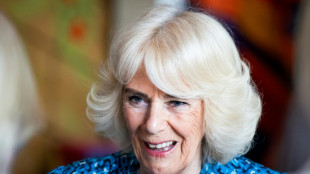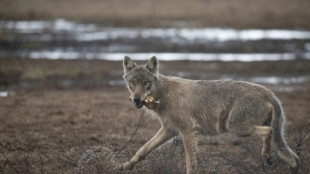
| RBGPF | -2.8% | 60.31 | $ | |
| RYCEF | 2.69% | 7.44 | $ | |
| BCC | -1.41% | 145.47 | $ | |
| SCS | -1.64% | 13.498 | $ | |
| BCE | 0.37% | 27.14 | $ | |
| JRI | 0.15% | 13.52 | $ | |
| RELX | 0.28% | 47.465 | $ | |
| NGG | -0.35% | 63.16 | $ | |
| CMSC | 0.04% | 24.58 | $ | |
| RIO | 1% | 63.91 | $ | |
| VOD | 0.06% | 8.875 | $ | |
| AZN | 1.91% | 68.345 | $ | |
| GSK | 1.82% | 34.945 | $ | |
| BTI | -1.02% | 37.35 | $ | |
| BP | 1.58% | 29.455 | $ | |
| CMSD | -0.23% | 24.335 | $ |
How AFP's Jeff Pachoud got those 'insane' Olympic BMX shots

His eye-popping picture of a BMX ace seemingly riding to the top of an ancient Egyptian obelisk on his bike during the Paris Olympics has gone around the world.
Jeff Pachoud's surreal shots from the Place de la Concorde in Paris are just some of the AFP photographs that have become iconic during the Games.
Jerome Brouillet's photo of the floating Brazilian surfer was called the "defining image" of the 2024 Olympics on only the third day of competition, but Pachoud has been giving his colleague a run for his money.
His images, particularly of the BMX riders, have been hailed as "insane" and "amazing" on social media.
"I'm in the really luxurious position... of not having to cover events" blow-by-blow, he said. Instead Pachoud -- who has a cupboard full of prizes for his sports photos -- was given the freedom to go get images that "would be a bit different".
That roaming brief "changes everything", the 40-year-old admitted.
"That means I can concentrate on something and wait until I can get the shot" that will really stand out, said the photojournalist, who is based out of AFP's bureau in Lyon, France's culinary capital.
Pachoud was drawn to the skateboard park set up against the spectacular backdrop of Place de la Concorde, the vast historic square at the foot of the Champs-Elysees.
But his eye was quickly drawn to the training going on nearby for the BMX events.
"You can work more freely when you are covering training -- things are less fixed, you can wander around a bit," he said.
Straight away he spotted the possibility of getting a rider "nose to nose" with the 3,000-year-old obelisk from the Temple of Luxor that was given to France by Egypt's ruler in 1830. So he tried to work out their trajectories, found the perfect spot and then waited.
"An enormous part of this is luck, it all depends on the performance of the athlete," said Pachoud, a keen mountaineer.
"It wasn't just one click, it was a burst and in that there was an image which gave this amazing visual impression..."
It looked like the Argentinian Jose Torres Gil was defying the laws of gravity by riding up to the side of the monument. Two days later he won the Olympic gold.
Another of Pachoud's images that clients snapped up was of Brazilian Gustavo Batista De Oliveira seemingly upside down kissing the top of the Eiffel Tower as he did a loop.
To get that shot, the photographer had to leave the venue.
"From the outside you could see the Eiffel Tower better. I noticed that every time the riders went up the big ramp they went over it."
But "soon I wasn't alone" as a group of other photographers followed him out to try to get their own images.
BMX and skateboarding -- recent additions to the Games -- are particularly "spectacular", said Pachoud. "So I tend to go for that kind of sport. That said, I was doing the table tennis today. Even so I try to teach myself to look differently at things to get a cool photo."
(A.Moore--TAG)

 London
London

 Manchester
Manchester
 Glasgow
Glasgow
 Dublin
Dublin
 Belfast
Belfast
 Washington
Washington
 Denver
Denver
 Atlanta
Atlanta
 Dallas
Dallas
 Houston Texas
Houston Texas
 New Orleans
New Orleans
 El Paso
El Paso
 Phoenix
Phoenix
 Los Angeles
Los Angeles



